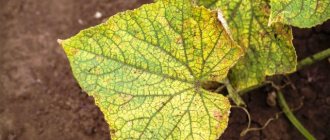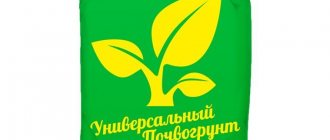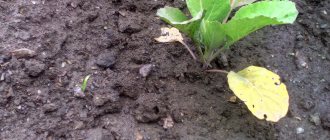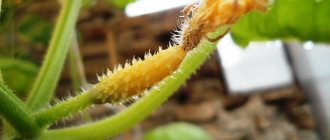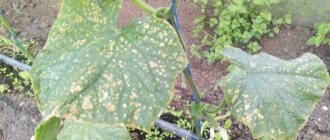Photo: m.fotostrana.ru Currant bushes are quite unpretentious and not too sensitive to diseases. But even such a picky berry has problems. And here it is important to promptly determine the source and eliminate the root cause, so as not to lose the harvest or even the entire planting. We tell you why currant leaves turn yellow and what to do if they dry out!
Currant leaves turn yellow evenly
If the problem manifests itself more or less evenly throughout the currant bush, most often the reason is improper care. This is easy to adjust and compensate for.
— If watering is excessive, the yellowness gradually darkens and the leaves soften. This means that the process of decay has already begun. When the problem affects many leaves at once, check the root collar to rule out root rot;
— When the plates themselves turn yellow first, but the veins remain bright green, then the currant may lack nitrogen. But it is important not to overdo it, otherwise the bush will begin to grow green mass to the detriment of fruiting;
— The veins begin to turn yellow synchronously with boron deficiency. If you let the situation get worse, the leaves will dry out and simply fall off at the edges.
Photo: 7dach.ru
Why do tomato leaves turn yellow and dry?
Currant leaves turn yellow in spots
If yellowness appears chaotically, this is a symptom of fungi, spots and infectious diseases.
— Small yellow spots that quickly turn brown or black are a sure symptom of anthracnose. Over time, the fungus spreads throughout the entire leaf plate. The color changes due to the destruction of chlorophyll in the cells;
— If the spots acquire a pronounced red tint, this is a sign of rust. Gradually, orange swellings appear on the underside of the plate;
— Numerous round spots, which are becoming more and more numerous, are a symptom of spotting. Gradually, each spot darkens, and its middle turns white. Depending on the weather, it may dry out and crack;
— Irregularly shaped spots cover the entire plate and are woven into one intricate mosaic pattern. This is an incurable virus that is important to diagnose and eliminate in time.
Photo: stroy-podskazka.ru
Currant leaves turn yellow and become deformed
Sometimes the leaves change not only color, but also shape, become covered with tubercles, stretch out or curl.
— If the leaf turns yellow at the edges, and over time begins to curl downward, the currant does not have enough potassium. At the same time, it will not dry out and fall off completely, and after feeding it will be restored safely;
— When the edges of the leaves curl and the plates begin to fly around, feed the currants with phosphorus. With its deficiency, the spots gradually acquire a purple tint;
— If the leaves turn yellow and stretch out, take on a strange shape and seem to curl, this is a terry virus. Its secondary symptoms are a change in the color and structure of inflorescences, shredding of fruits;
— When the yellow spots turn brown and become covered with swollen tubercles, these may be galls or gall aphids. It is difficult to notice because it is tiny and almost transparent. But she mercilessly drinks all the juices from the plant.
Photo: zen.yandex.ru
Why do raspberry leaves turn yellow and dry?
Viral diseases that cause yellow leaves
The fight against viruses is generally ineffective and leads to the death of plants; they stop bearing fruit and dry out. The main task is to protect healthy bushes from possible infection.
Terry
This virus is a consequence of a spider mite attack on a plant. It is almost impossible to detect the disease at the initial stage, and useless at the later stage. This insidious virus can hibernate and become active again after a while.
The main symptoms are not only the appearance of yellowness, but also deformation of the leaf. It stretches out, becomes stiff, and the flowers separate into petals and acquire a purple color. The characteristic currant aroma also disappears.
A healthy plant can take over this virus from a diseased one through grafting or pruning. There is no drug that completely destroys this virus. In advanced cases, the bushes are dug up and burned. The bushes in the neighborhood must be treated with boron and manganese compounds.
Mosaic
A dangerous and harmful virus that cannot be cured. The affected bush changes leaf color: yellow-gray inclusions appear on a green background, intertwining with each other and looking like a stained glass mosaic. The distribution begins from the veins, moving to the entire surface.
Diseased bushes are removed along with the roots and sent to the firebox. The soil at the site of the bush is treated with potassium permanganate.
Currant leaves are drying
Very often, yellow leaves inevitably begin to dry out over time. But even here there are nuances that may indicate the root cause of the problem.
— If the plant has too little moisture, the leaves gradually turn yellow and dry out;
— On too hot days, currants may dry out due to an excess of scorching sun. In this case, you should think about a small shelter;
— When the edges of the yellow plate dry out, the currants probably lack iron. But if there is too much of it, the leaves fade and become lethargic, but do not dry out;
— Dark spots on the leaves lighten in the center, and then dry out when affected by septoria. In advanced cases, it causes premature leaf fall;
- Individual dry plaques on the leaves indicate a lack of manganese. Most often they are grayish in color and do not spread to the shoots.
Photo: babushkinadacha.ru
Pests
Leaf blades can change their color not only due to diseases. Pests also cause significant damage to currants.
Gall aphid
When infested by this insect, characteristic tubercles—galls—appear on the leaf blade. First, aphids damage the most tender young leaves. This parasite has an oblong body, no more than 2 mm long. During a season, aphids can produce up to 20 generations.
In addition to drinking cell sap, weakening the plant, it can serve as a carrier of fungal and viral diseases. The leaves, deprived of nutrients, first turn red, as they multiply, they turn yellow and fall off even at the beginning of summer.
Bulges on the leaves are a sure sign of currant infestation with gall aphids.
If parasites have already been noticed on currants last year, in the spring the plantings are treated with insecticides for prevention.
A popular method among summer residents is to scald shrubs with boiling water in the spring, until the buds open.
Currant glass
If the leaves and berries of the currant become smaller, and the shoots dry out, it is possible that a glass cell has settled inside the bush.
This is a butterfly with a color similar to a wasp; there are orange stripes on the sides of its transparent wings. In May-June, she lays up to 50 oblong eggs in the bark, near young buds. The hatched caterpillars eat the shoot from the inside. The leaves of a diseased bush begin to turn yellow from the petiole to the center and dry out.
To get rid of the butterfly, leaves and shoots with larvae are removed and burned. The plant is treated with insecticides. You can use a folk remedy such as sprinkling the bush with mustard powder. The procedure is carried out as soon as the currants fade.
Spider mite
In addition to yellowing of leaves, it is characterized by the appearance of cobwebs in places where insects accumulate. The pest depletes the currants by consuming nutrients from them. To stop its spread at an early stage of infection, you need to water the leaves generously once every few days. For large colonies of the pest, treatment with a soap solution, as well as garlic, dandelion, tobacco, and onion infusions is necessary. In severe cases, acaricides are used.
The leaves turn yellow and become covered with plaque
Plaque on the leaves is most often a fungus, or more precisely, mycelium and the spores by which it reproduces.
— If yellow spots appear on currant leaves, as if covered with a white coating, this is powdery mildew. It spreads on dry, hot days;
— If after the appearance of plaque the leaf begins to darken and dry out, it is most likely a spheroteka. It destroys fruits and is more characteristic of black currants;
— A plaque in the form of a cobweb with small light spots is a characteristic symptom of a spider mite. They are especially active on hot, dry days.
Photo: 2sotki.ru
Why do tomato leaves curl: what to do?
Treatment
Columnar rust can be combated in a variety of ways. Typically, gardeners use biological and chemical methods. Biological control methods involve the use of drugs containing live cultures that attack the fungal infection. Biological products can be of the following types:
- bacterial;
- viral;
- fungal.
One of the representatives of biological preparations that effectively act on columnar rust is Fitosporin-M.
It contains spores of a biological culture that suppresses the activity of the columnar rust fungus and a number of similar diseases. "Fitosporin-M" destroys more than 30 types of fungi. The advantage of this biological preparation is that it can be used under any temperature and climatic conditions and during any growing season. It can be used during the process of bud swelling, flowering and fruiting. In addition to the drug “Fitosporin-M”, “Fitocid-R” and “Gamair” can be used to combat columnar rust. Biological drugs have the following advantages:
- substances do not accumulate in plant tissues;
- do not harm humans or animals;
- fungal infection does not get used to the drug;
- biological agents strengthen plant immunity;
- substances are used in minimal dosage.
Chemicals
Some disadvantage of biological drugs is their low speed of action, in which the effect occurs after some time. Chemical preparations are more active because they contain highly toxic and poisonous substances. To combat columnar rust, you can use active contact fungicides, which include Topaz and Oxychom. To spray berry bushes with Topaz, it is enough to dissolve one ampoule in 10 liters of water. At this concentration, the drug can be used in any period of plant life. Read about growing and caring for Saperavi grapes here.
The drug "Oxychom" is a very active fungicide due to its components. It is best used before flowering begins.
The concentration of the drug for processing Early sweet currants, as well as other varieties, should be 35-45 grams per 10 liters of water. Treatment should be carried out in dry weather early in the morning or after sunset. Treatment can be carried out 2-3 times with a two-week interval. When working with the drug, you need to use gloves, a respirator and goggles. When spraying plants, you should ensure that as little of the product as possible gets onto the ground. This material will tell you about growing Kesha grapes.
In order to avoid the fungus becoming accustomed to the drug, it should be alternated with other fungicides. “Oxychom” should absolutely not be used during rain.
To combat columnar rust, gardeners most often use inexpensive and reliable preparations that include copper compounds. These are copper sulfate and copper oxychloride. They can be used to spray infected plants in their pure form, but the most popular and universal remedy is Bordeaux mixture. It is sold in powder form, which is diluted independently to the desired concentration. The Bordeaux mixture contains copper sulfate and slaked lime. You can also prepare this mixture yourself. In early spring, before buds begin to bloom, use a 3% solution of Bordeaux mixture; for this, 300 grams of copper sulfate and 400 grams of slaked lime are dissolved in 10 liters of water. During other periods of the growing season, a 1% solution should be used. A solution of copper sulfate and lime is dissolved in different containers, then the solution of copper sulfate is poured into the lime solution with constant stirring. Read about the features of growing Maiden grapes at this link.
You cannot prepare Bordeaux mixture components in metal containers.
Traditional methods
Supporters of ecological gardening use traditional methods to combat rust and other types of fungi. These agents are not as active as fungicides, but in the early stages of disease development they are very effective. To combat rust on currants, you can use the following infusions and decoctions:
- tobacco infusion;
- garlic infusion;
- soda solution;
- red pepper infusion;
- horsetail decoction.
To prepare tobacco infusion, you need to pour 200 grams of ground tobacco leaves with two liters of hot water and leave for at least 2 days. Garlic solution is prepared from 150 grams of finely chopped garlic cloves, which are poured with two liters of not too hot water. Infuse for three days. By dissolving two tablespoons of soda in 10 liters of water, you can obtain a safe solution for treating berry bushes.
For greater effectiveness, you need to add a little laundry soap to all solutions, which will ensure that the liquid sticks to the leaves.
Some gardeners use hot red pepper as an additional component. In addition to fighting fungal diseases, strong-smelling plant components are good at repelling insect pests.
To combat columnar rust, you can use horsetail decoction. To prepare it, you need to pour about 1 kg of fresh horsetail with 10 liters of water. Leave for 24 hours, then boil for two hours over low heat and, after cooling, strain through a sieve. To spray currants, horsetail concentrate is diluted with water in a ratio of 1: 5. Bushes can be treated with this solution starting in early spring and throughout the summer. This article will tell you about the uncovered Marinovsky grape variety.
Prevention
Proper implementation of preventive measures can protect currants from the appearance of fungal diseases. An important factor contributing to the appearance of columnar rust is excessive thickening of the crown of the berry bush. In the fall, it is imperative to prune and thin out currants. Branches older than five years should be removed. If there are a lot of old branches, then their removal should be done gradually so that the plant does not experience stress. The cut areas must be treated with garden varnish. All branches and fallen leaves cannot be left on the soil, but must be collected and burned. Weeds should be removed regularly, especially near bushes, and the soil should be dug up regularly.
When purchasing currant seedlings, you should give preference to varieties resistant to fungal diseases. For black currants these will be the varieties “Titania”, “Kazatskaya” and Alta”, and among the colored varieties resistant to columnar rust are “Versailles White”, “Jonker Van Tets” and “Pulkovskaya”.
Potassium sulfate and double superphosphate can be added to the tree trunk circle. To feed the plant, one tablespoon of granular fertilizer is enough. In autumn, currant bushes can be treated with a 2% solution of karbofos. Many gardeners, in the spring, before the buds open, treat currant bushes with hot water at a temperature of 80 degrees. It is useful to treat the soil around berry bushes with nitrophen.
Currant leaves grow yellow
If young shoots and leaves immediately lose color, the problem needs to be addressed urgently. Otherwise, the bush will be too weakened by the fruiting period.
— Fertilize with complex fertilizers, because most often in this case the currants lack nutrients;
— Check the soil moisture with a wooden stick - you may need to water more frequently;
— Make sure that the bud mite does not nest in the buds, which will eventually move to the shoots. Because of their colonies, young branches grow sickly and lag behind in development;
— The leaves grow small and yellowish if glass is hidden in the shoots. Its caterpillars eat up entire passages in the branches, which is why the currant can simply lose the entire crop.
Photo: vosadu-li-vogorode.ru
Preventive measures
Treating rust and eliminating its consequences is much more difficult than preventing the disease. Basic rules of prevention:
- In autumn, fallen leaves and plant debris are removed. The soil is being dug up.
- Weeds around the currants are removed.
- The area where currants grow should not be swampy or located where groundwater is located close to the surface. It is not recommended to plant shrubs near coniferous forests.
- In the spring, before flowering, currants are doused with boiling water. After this, spray with a solution of copper sulfate.
- After prolonged precipitation, preventive treatment is carried out. Use biological products or folk remedies.
The leaves of the seedlings turn yellow
The most offensive thing is when very young currant seedlings, lovingly planted on the plot, begin to turn yellow. In addition to the standard list of problems, there are several new reasons.
— If the leaves of the seedlings begin to turn yellow immediately after planting, this may be a reaction to stress, and then the plant will soon recover on its own;
— The second common reason is unexpected spring frosts, which causes the survival rate of seedlings to drop significantly. Take care of insulation in advance or plant currants under cover in the fall.
Photo: mycorrhiza.rf
Did you like the post? Subscribe to our channel in Yandex.Zen, it really helps us in our development!

